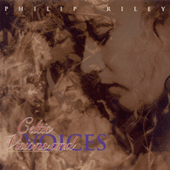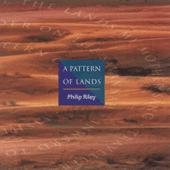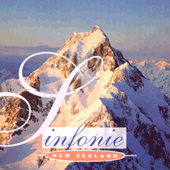Classical music is probably more familiar than we might at first imagine. Indeed, nowadays it is all around us, whether it be in restaurants, supermarkets, lifts, for advertising or as theme and incidental music on television. A great deal of film music either directly uses or draws from the ‘classical’ tradition; a good example of the former might be ‘2001: Space Odyssey’, and of the latter, the many scores John Williams has composed in recent years for such blockbusters as the Star Wars and Indiana Jones trilogies.
In the vast and wide-ranging world of ‘classical’ music there is truly something there for everyone - pieces which once discovered represent the start of an exciting and irresistible journey which will provide a lifetime’s listening pleasure. For example, those who are particularly excited by hearing instrumentalists working at full stretch will thrill to the likes of Liszt and Paganini, or if something a little more reserved and self-contained is required, the chamber music of Haydn or Mozart would be a good starting point. If a full symphony orchestra in overdrive is more to your taste then Tchaikovsky or Richard Strauss could well fit the bill, whereas those who have already warmed to Vivaldi’s ‘Four Seasons’ might well try the music of some of the great Italian’s contemporaries such as Handel, Johann Sebastian Bach or Domenico Scarlatti. Whatever your tastes may be, there has never been a better time to start building a ‘classical’ music collection on CD.
Any attempt to define what is meant literally by the term ‘classical’ music is fraught with difficulty. How does one encapsulate in just a few words a musical tradition which encompasses such infinite varieties of style and expression, from the monastic intonings of Gregorian chant to the laid-back jazz inflections of Gershwin’s Rhapsody in Blue, from the elegant poise of Mozart’s Eine kleine Nachtmusik to the despairing, heightened emotionalism of Tchaikovsky’s “Pathetique” Symphony? One is treading on very dangerous ground indeed if one pre-supposes that it is simply ‘superior’ to other musical types such as popular, jazz, rock and the like, let alone the music of other cultures.
In general ‘popular’ music may be as clear in expression as the longer examples of ‘classical’ music. One important difference, however, lies in the logical connection that exists in ‘classical’ music between the beginning and end, with the latter a logical extension and development of the former. ‘Popular’ music, on the other hand, tends to present its material without development, the music ending when interest is exhausted.
Sadly, whilst ‘classical’ music is socially undivisive in itself, it has unfortunately become associated in most people’s minds with the intellectual elite. Even now, and with certain honourable exceptions, the attending of a ‘live’ concert can be an intimidating (not to say costly) experience for the uninitiated, especially in that most jealously guarded of establishments, the opera house. The wonderful thing about the technological age in which we live, and particularly the advent of the compact disc, is that we can bypass all irrelevant social and intellectual pretence, and enjoy in the comfort of our own home (often at far less cost) some of the finest music ever composed.
With such a breathtaking variety of material available, it is an awesome task to know just where to begin your disc collection, and as a result expensive mistakes are often made as tempting looking purchases turn out to be something of a disappointment. This is where the Naxos catalogue really comes into its own, and where it is hoped this guide will help prospective purchasers to make an informed choice about the kind of music they are likely to enjoy.
The Naxos label provides a library of high quality performances of music by the great masters in modern digital sound; accompanied by authoritative and user-friendly booklet notes and at the lowest possible price. There are already nearly 7,500 titles from which to choose, and with new releases emerging at the rate of about eight every month, even the enthusiastic collector is well and truly catered for. With every historical period and genre covered, there is something in the Naxos catalogue for everyone, especially those who wish to build a truly representative collection of the central masterworks in the ‘classical’ tradition.
This is the first period where we can begin to be fairly certain as to how a great deal of the music which has survived actually sounded. The earliest written secular music dates from the 12th century troubadours (in the form of virelais, estampies, ballades, etc.), but most notated manuscripts emanate from places of learning usually connected with the church, and therefore inevitably have a religious basis.
Gregorian chant and plainsong which are monodic (i.e. written as one musical line) gradually developed during the 11th to 13th centuries into organum (i.e. two or three lines moving simultaneously but independently, therefore almost inadvertently representing the beginnings of harmony). Organum was, however, initially rather stifled by rigid rules governing melody and rhythm, which led ultimately to the so-called Ars Nova period of the 14th century, principally represented by the composers de Vitry, Machaut, and Landini.
Recommended Recording:
- Adorate Deum: Gregorian Chant from the Proper of the Mass Nova Schola Gregoriana
Naxos 8.550711
The fifteenth century witnessed vastly increased freedoms, most particularly in terms of what is actually perceived as ‘harmony’ and ‘polyphony’ (the simultaneous movement of two or three interrelated parts). Composers (although they were barely perceived as such) were still almost entirely devoted to choral writing, and the few instrumental compositions which have survived often create the impression (in many cases entirely accurately) of being vocal works in disguise, but minus the words.
There is obvious new delight in textural variety and contrast, so that, for example, a particular section of text might be enhanced by a vocal part dropping out momentarily, only to return again at a special moment of emphasis. The four most influential composers of the fifteenth century were Dunstable, Ockeghem, Despres and Dufay.
The second half of the 16th century witnessed the beginnings of the tradition which many music lovers readily associate with the normal feel of ‘classical’ music. Gradually, composers moved away from the modal system of harmony which had predominated for over 300 years (and still sounds somewhat archaic to some modern ears), towards the organisation of their work into major and minor scales, thereby imparting the strong sensation of each piece having a definite tonal centre or ‘key’.
This was also something of a golden period for choral composition as a seemingly endless flow of a capella (unaccompanied) masses, motets, anthems, psalms and madrigals flowed from the pens of the masters of the age. In addition, instrumental music came into its own for the first time, especially keyboard music in the form of fantasias, variations, and dance movements (galliards, pavanes etc.). Composers of particular note include Dowland, Tallis, Byrd, Gibbons, Frescobaldi, Palestrina, Victoria, Lassus, Alonso Lobo, Duarte Lobo, Cardoso and Gesualdo.
Recommended Recordings:
- Byrd: Mass for Four Voices; Mass for Five Voices; Infelix ego
Naxos 8.550574 - Gesualdo: Sacred Music for Five Voices (Complete)
Naxos 8.550742 - Lamentations
Music by Tallis, White, Palestrina, Lassus and de Brito
Naxos 8.550572 - Lassus: Missa super entre vous; Infelix ego; Missa imitationem moduli susanne un tour
Naxos 8.550842 - Lobo: Missa pro defunctis / Cardoso: Missa pro defunctis
Naxos 8.550682 - Palestrina: Missa Papae Marcelli; Missa aeterna Christi munera
Naxos 8.550573 - Palestrina: Missa hodie Christus natus est; Hodie Christus natus est; Stabat mater / Lassus: Missa bell’ amfitrit’ altera
Naxos 8.550836 - Tallis: Mass for Four Voices; Motets
Naxos 8.550576 - Victoria: Missa O magnum mysterium; Missa O quam gloriosum / A. Lobo: Versa est in luctum
Naxos 8.550575
During the Baroque period, the foundations were laid for the following 300 or so years of musical expression: the idea of the modern orchestra was born, along with opera (including the overture, prelude, aria, recitative and chorus), the concerto, sonata, and modern cantata. The rather soft-grained viol string family of the Renaissance was gradually replaced by the bolder violin, viola and cello, the harpsichord was invented, and important advances were made in all instrumental groups.
Until about 1700, the old modes still exerted themselves from time to time by colouring certain melodic lines or chord progressions, but from the beginning of the 18th century the modern harmonic system based upon the major and minor scales was effectively pan-European. Choral music no longer dominated, and as composers turned more and more to writing idiomatic instrumental works for ensembles of increasing colour and variety, so ‘classical’ music (as opposed to ‘popular’) gradually began to work its way into the very fabric of society, being played outdoors at dinner parties or special functions (e.g. Handel’s Water Music), or as a spectacle in the form of opera. On a purely domestic level, every wealthy lady would have a spinet to play, and at meal-times the large and rich houses would employ musicians to play what was popularly called Tafelmusik in Germany, of which Telemann was perhaps the most famous composer.
Of the many 17th century composers who paved the way for this popular explosion of ‘classical’ music, the following were outstanding: Monteverdi, Corelli, Alessandro Scarlatti, Schutz, Buxtehude, Purcell and Lully. Yet, the most popular composers of the period, indeed those who seem to define by their very names the sound of Baroque music at its most colourful and sophisticated are Johann Sebastian Bach, Handel, Telemann, Rameau, François Couperin, Domenico Scarlatti, and Vivaldi, all of them at their creative peak during the first half of the 18th century.
The Baroque era witnessed the creation of a number of musical genres which would maintain a hold on composition for years to come, yet it was the Classical period which saw the introduction of a form which has dominated instrumental composition to the present day: sonata form. With it came the development of the modern concerto, symphony, sonata, trio and quartet to a new peak of structural and expressive refinement. If Baroque music is notable for its textural intricacy, then the Classical period is characterised by a near-obsession with structural clarity.
The seeds of the Classical age were sown by a number of composers whose names are now largely forgotten such as Schobert and Honnauer (both Germans largely active in Paris), as well as more historically respected names, including Gluck, Boccherini and at least three of Johann Sebastian Bach’s sons: Carl Phillip Emmanuel, Wilhelm Friedmann and Johann Christian (the so-called ‘London’ Bach). They were representative of a period which is variously described as rococo or galante, the former implying a gradual move away from the artifice of the High Baroque, the latter an entirely novel style based on symmetry and sensibility, which came to dominate the music of the latter half of the 18th century through two composers of extraordinary significance: Joseph Haydn and Wolfgang Amadeus Mozart.
As the Classical period reached its zenith, it was becoming increasing clear (especially with the late works of Beethoven and Schubert) that the amount and intensity of expression composers were seeking to achieve was beginning to go beyond that which a Classically sized/designed orchestra/piano could possibly encompass. The next period in musical history therefore found composers attempting to balance the expressive and the formal in music with a variety of approaches which would have left composers of any previous age utterly bewildered. As the musical map opened up, with nationalist schools beginning to emerge, it was the search for originality and individuality of expression which began here that was to become such an over-riding obsession in the present century.
The Romantic era was the golden age of the virtuoso, where the most fiendishly difficult music would be performed with nonchalant ease, and the most innocuous theme in a composition would be developed at great length for the enjoyment of the adoring audience. The emotional range of music during this period was considerably widened, as was its harmonic vocabulary and the range and number of instruments which might be called upon to play it. Music often had a 'programme' or story-line attached to it, sometimes of a tragic or despairing nature, occasionally representing such natural phenomena as rivers or galloping horses. The next hundred years would find composers either embracing whole-heartedly the ideals of Romanticism, or in some way reacting against them.
Of the early Romantic composers, two Nationalists deserve special mention, the Russian Glinka (of Russlan and Ludmilla fame) and the Bohemian Smetana (composer of the popular symphonic poem Vltava or 'The Moldau'). However, the six leading composers of the age were undoubtedly Berlioz, Chopin, Mendelssohn, Schumann, Liszt and Verdi.
The period since the Great War is undoubtedly the most bewildering of all, as composers have pulled in various apparently contradictory and opposing directions. Typical of the dilemma during the inter-war years, for example, were the Austrians, Webern and Lehar, the former was experimenting with the highly compressed and advanced form known as ‘serial structure’, while simultaneously Lehar was still indulging in an operetta style which would not have seemed out of place over half a century beforehand.
So diverse are the styles adopted throughout the greater part of the present century that only by experimentation can listeners discover for themselves whether certain composers are to their particular taste or not. However, the following recordings serve as an excellent introduction and will certainly repay investigation:
Recommended Recordings:
- Antill: Corroboree ; Outback Overture
Naxos 8.570241 - Britten: The Young Person’s Guide to the Orchestra; Prokofiev: Peter and the Wolf; Saint-Saens: Carnival of the Animals
Naxos 8.550499 - Copland: Rodeo; Billy the Kid; Appalachian Spring; Fanfare for the Common Man
Naxos 8.550282 - Gershwin: Piano Concerto; Rhapsody in Blue; An American in Paris
Naxos 8.550295 - Orff: Carmina Burana
Naxos 8.550196 - Prokofiev: Romeo and Juliet (Highlights)
Naxos 8.550380 - Shostakovich: Symphonies Nos. 5 & 9
Naxos 8.550427 - Stravinsky: Jeu des cartes; Rite of Spring (1947 version)
Naxos 8.550472
The period since the Great War is undoubtedly the most bewildering of all, as composers have pulled in various apparently contradictory and opposing directions. Typical of the dilemma during the inter-war years, for example, were the Austrians, Webern and Lehar, the former was experimenting with the highly compressed and advanced form known as ‘serial structure’, while simultaneously Lehar was still indulging in an operetta style which would not have seemed out of place over half a century beforehand.
So diverse are the styles adopted throughout the greater part of the present century that only by experimentation can listeners discover for themselves whether certain composers are to their particular taste or not. However, the following recordings serve as an excellent introduction and will certainly repay investigation:
Recommended Recordings:
- Antill: Corroboree ; Outback Overture
Naxos 8.570241 - Britten: The Young Person’s Guide to the Orchestra; Prokofiev: Peter and the Wolf; Saint-Saens: Carnival of the Animals
Naxos 8.550499 - Copland: Rodeo; Billy the Kid; Appalachian Spring; Fanfare for the Common Man
Naxos 8.550282 - Gershwin: Piano Concerto; Rhapsody in Blue; An American in Paris
Naxos 8.550295 - Orff: Carmina Burana
Naxos 8.550196 - Prokofiev: Romeo and Juliet (Highlights)
Naxos 8.550380 - Shostakovich: Symphonies Nos. 5 & 9
Naxos 8.550427 - Stravinsky: Jeu des cartes; Rite of Spring (1947 version)
Naxos 8.550472
See Post ‘Great War’ Years (c.1920–Present) Period Catalogue List


